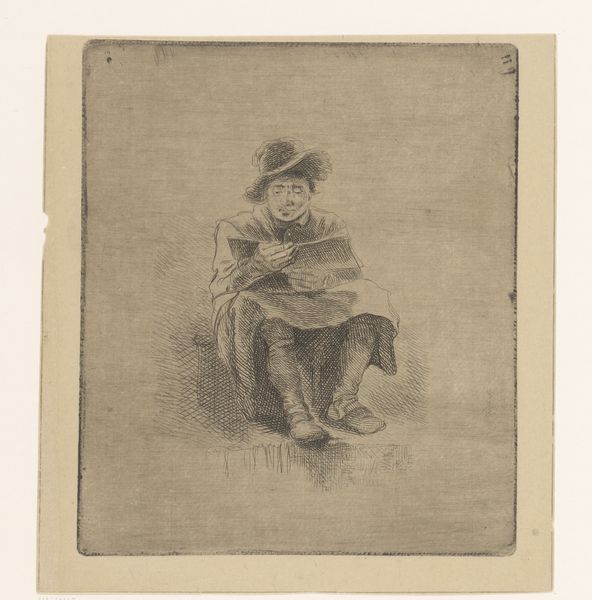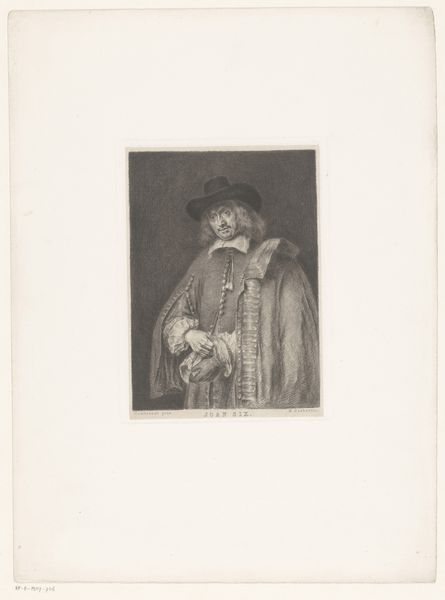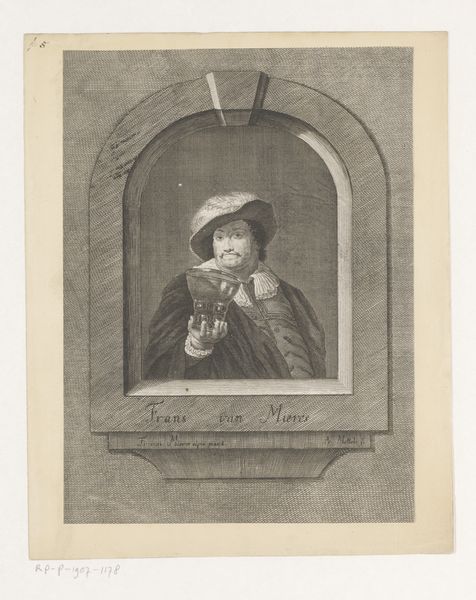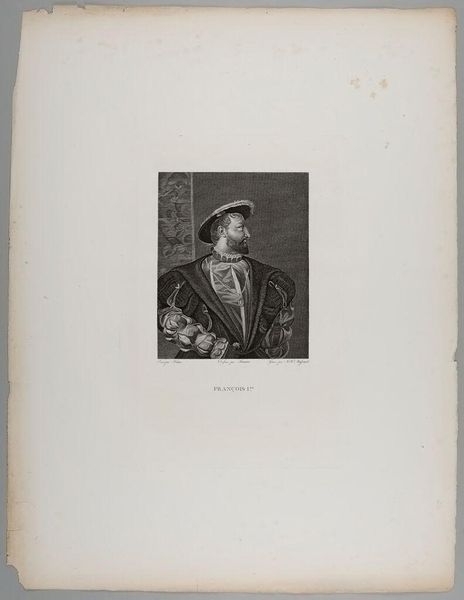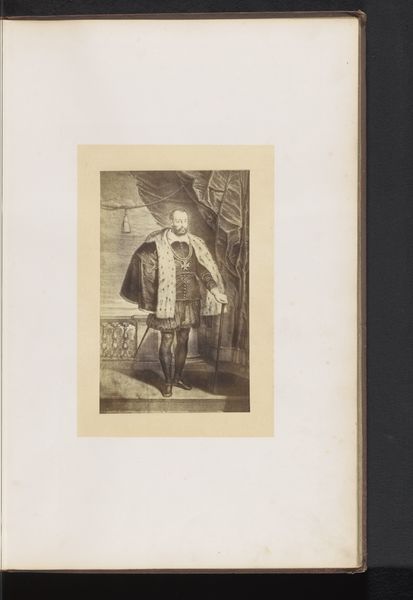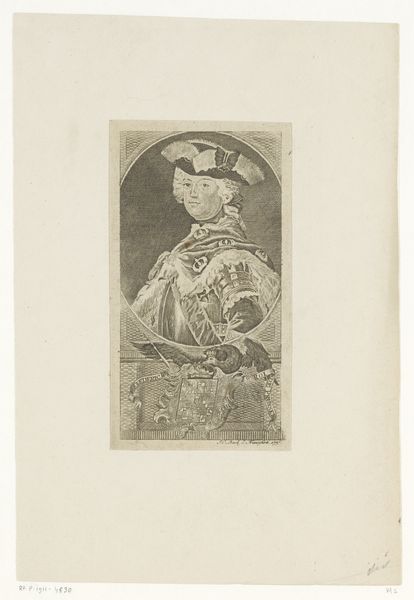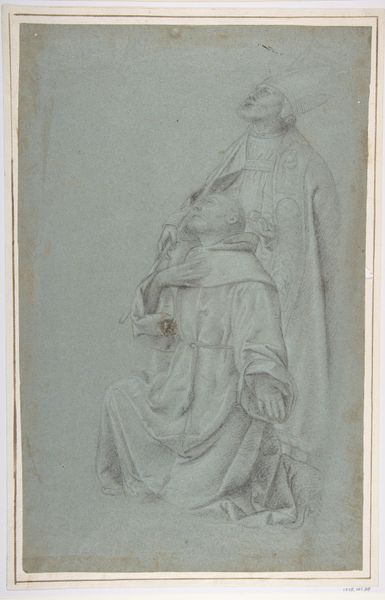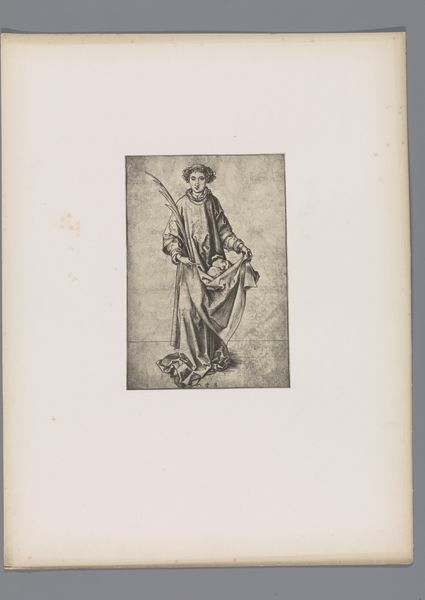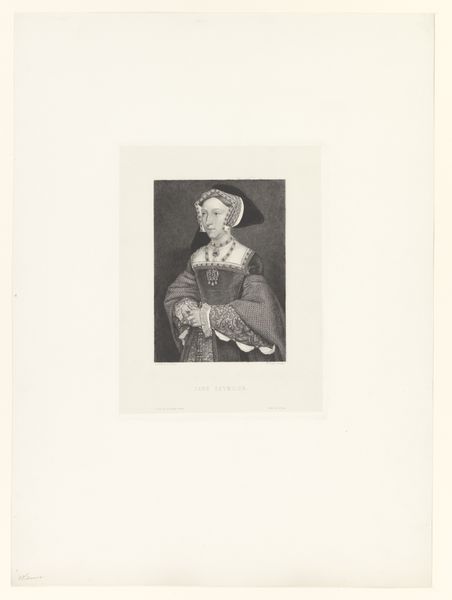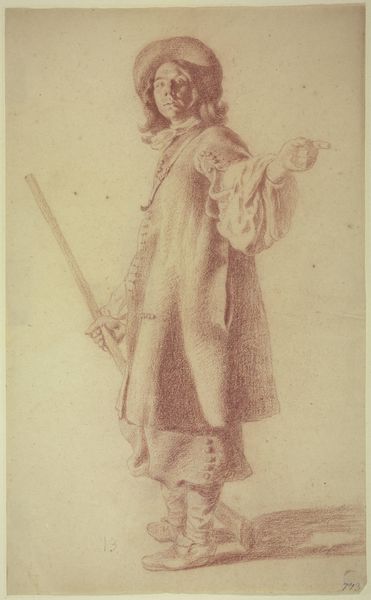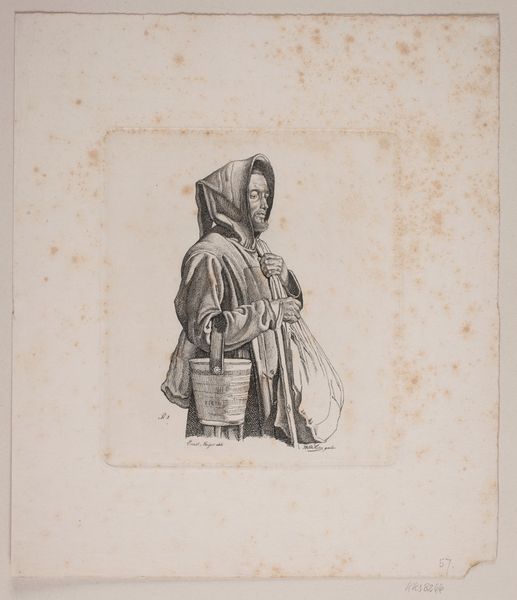
drawing, paper, engraving
#
portrait
#
drawing
#
dutch-golden-age
#
paper
#
coloured pencil
#
history-painting
#
engraving
#
watercolor
Dimensions: height 259 mm, width 173 mm
Copyright: Rijks Museum: Open Domain
Editor: So, this is "Portret van Jan Six," a drawing by Johann Wilhelm Kaiser, dating from 1823-1900, housed here at the Rijksmuseum. It looks like it’s made with coloured pencil, engraving, and watercolour on paper. It has this rather solemn, historical air. What do you see in this piece, from your perspective? Curator: Well, it's interesting how this 19th-century work deliberately evokes the Dutch Golden Age. It speaks to a romanticised vision of the past, particularly considering the social and political upheavals happening during its creation. Kaiser’s Jan Six isn't just a portrait; it's an engagement with notions of Dutch identity and power. I'd be curious, how do you read Jan Six’s pose and expression in the context of class and privilege at the time this work was made? Editor: He seems kind of detached, maybe even weary. Is that suggesting anything about the position of privilege then, perhaps starting to crack? Curator: Exactly! The slight weariness you observe could be interpreted as a commentary on the burdens, or perhaps the precarity, of inherited power. Artists often used portraiture to both celebrate and subtly critique the social order. Also, think about the act of *reviving* Golden Age aesthetics; that can often indicate a yearning for a supposed "better" time, a reaction against contemporary societal anxieties. Does knowing it's a 19th-century piece influence how you read it? Editor: Definitely! I think I was initially seeing it as a straightforward historical portrait. But now, knowing when it was made, it reads as more of a statement, loaded with contemporary meaning about historical identity. Curator: Precisely. It serves as a potent reminder that art is never created in a vacuum; it always exists in conversation with its own time. Editor: That’s so insightful, seeing how the artist’s contemporary context influences our reading of this historical figure, centuries later. Thanks!
Comments
No comments
Be the first to comment and join the conversation on the ultimate creative platform.

